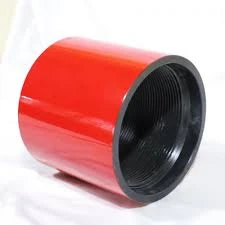- Afrikaans
- Albanian
- Amharic
- Arabic
- Armenian
- Azerbaijani
- Basque
- Belarusian
- Bengali
- Bosnian
- Bulgarian
- Catalan
- Cebuano
- Corsican
- Croatian
- Czech
- Danish
- Dutch
- English
- Esperanto
- Estonian
- Finnish
- French
- Frisian
- Galician
- Georgian
- German
- Greek
- Gujarati
- Haitian Creole
- hausa
- hawaiian
- Hebrew
- Hindi
- Miao
- Hungarian
- Icelandic
- igbo
- Indonesian
- irish
- Italian
- Japanese
- Javanese
- Kannada
- kazakh
- Khmer
- Rwandese
- Korean
- Kurdish
- Kyrgyz
- Lao
- Latin
- Latvian
- Lithuanian
- Luxembourgish
- Macedonian
- Malgashi
- Malay
- Malayalam
- Maltese
- Maori
- Marathi
- Mongolian
- Myanmar
- Nepali
- Norwegian
- Norwegian
- Occitan
- Pashto
- Persian
- Polish
- Portuguese
- Punjabi
- Romanian
- Russian
- Samoan
- Scottish Gaelic
- Serbian
- Sesotho
- Shona
- Sindhi
- Sinhala
- Slovak
- Slovenian
- Somali
- Spanish
- Sundanese
- Swahili
- Swedish
- Tagalog
- Tajik
- Tamil
- Tatar
- Telugu
- Thai
- Turkish
- Turkmen
- Ukrainian
- Urdu
- Uighur
- Uzbek
- Vietnamese
- Welsh
- Bantu
- Yiddish
- Yoruba
- Zulu
api 5ct casing coupling
Understanding API 5CT Casing Couplings A Key Component in Oil and Gas Operations
In the oil and gas industry, efficiency and reliability are paramount for successful drilling and production operations. One of the critical components that play a significant role in these operations is the casing coupling, particularly the API 5CT casing coupling. Understanding its specifications, applications, and importance can help stakeholders make informed decisions regarding drilling operations.
What is API 5CT?
API 5CT is an American Petroleum Institute (API) specification that outlines the standards for casing and tubing used in oil and gas wells. This specification ensures that the materials and products used in drilling are reliable and suitable for various environmental conditions and pressure regimes. API 5CT primarily focuses on the steel casing pipes that are used to line the boreholes of oil and gas wells, providing structural integrity and preventing the collapse of the borehole.
The Role of Casing Couplings
Casing couplings in the context of API 5CT are short pipe fittings that connect consecutive pieces of casing. In a typical well construction, multiple casing pipes of varying diameters and lengths are needed. Casing couplings serve as the junction points between these pipes, allowing for flexibility and expansion within the casing string. They play a vital role in maintaining the integrity of the well, ensuring that the casing remains secure and aligned.
Types of Casing Couplings
API 5CT casing couplings are available in various types, including
1. Regular Couplings These are the standard types used for connecting casing pipes of the same diameter. 2. Long Couplings Designed for increased connection strength, long couplings are often used in high-pressure environments. 3. Specialty Couplings These are tailored for specific applications or unique casing configurations, providing additional customization for complex drilling operations.
api 5ct casing coupling

Material and Design Considerations
The materials used in the manufacture of API 5CT casing couplings are crucial for their performance and durability. Typically made from high-strength carbon steel, these couplings must withstand harsh conditions, such as extreme temperatures, high pressures, and corrosive environments. The design of casing couplings is governed by stringent API standards, which dictate the mechanical properties, dimensions, and testing protocols to ensure safety and effectiveness.
Importance in Drilling Operations
Casing couplings are not just connectors; they are essential components that contribute to the overall performance of drilling operations. Their importance can be summarized in several key points
1. Structural Integrity Casing couplings help maintain the structural integrity of the wellbore, preventing collapse and ensuring that drilling can proceed safely. 2. Pressure Management They facilitate the proper management of pressure within the well, which is crucial for both production efficiency and safety. 3. Flexibility in Design The availability of different types of couplings allows for flexibility in well design, enabling engineers to adapt to varying geological conditions and operational requirements. 4. Reduction in Downtime High-quality casing couplings minimize the risk of failures during drilling operations, which helps reduce downtime and associated costs.
Compliance and Quality Assurance
To ensure that casing couplings meet industry standards, regular testing and quality assurance practices are critical. Manufacturers of API 5CT casing couplings must undergo rigorous inspections and testing to verify that their products adhere to API specifications. This includes mechanical testing, dimensional inspection, and assessments of resistances to environmental factors, ensuring that only high-quality products reach the market.
Conclusion
In summary, API 5CT casing couplings are a fundamental component in the drilling and production operations of the oil and gas industry. Their role in maintaining the structural integrity of the wellbore, managing pressure, and providing flexibility in well design cannot be understated. Understanding the specifications and applications of these couplings is crucial for industry stakeholders to ensure efficient and safe operations. As technology advances and the industry evolves, the importance of adhering to API standards will continue to rise, reinforcing the need for quality and reliability in all components used in oil and gas drilling.
-
Tubing Pup Joints: Essential Components for Oil and Gas OperationsNewsJul.10,2025
-
Pup Joints: Essential Components for Reliable Drilling OperationsNewsJul.10,2025
-
Pipe Couplings: Connecting Your World EfficientlyNewsJul.10,2025
-
Mastering Oilfield Operations with Quality Tubing and CasingNewsJul.10,2025
-
High-Quality Casing Couplings for Every NeedNewsJul.10,2025
-
Boost Your Drilling Efficiency with Premium Crossover Tools & Seating NipplesNewsJul.10,2025







